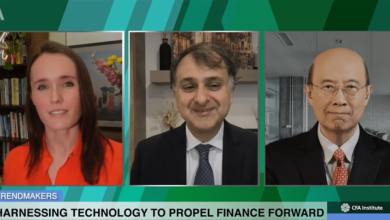The Auto Sector’s Green Transition: Three Roads to Lower Returns?

Three investment return trends related to the green transition concern me. These apply across all sectors but to automotive in particular.
Here is how I see it.

1. Pricing is challenging.
The strong automotive demand during the COVID-19 pandemic was fueled largely by wealthier customers and is on the wane, especially for electric vehicles (EVs), which are often second vehicles priced as premium products. Until recently, automakers experienced bottlenecks with their finely tuned production systems. The mismatch between supply and demand adjusted pricing upward to reestablish equilibrium. Cheap financing and a shortage of used vehicles exacerbated this trend.
According to Kelley’s Blue Book, US EVs cost US$58,940 on average in March 2023, around $11,000 more than their counterparts with internal combustion engines (ICEs). Despite the 30% increase in new vehicle prices during the pandemic, the monthly lease payments and consumer end cost was lower. This “goldilocks” scenario is now unwinding, with interest rates climbing, residual values falling, and supply chain bottlenecks dissipating.
Incentives have sent new car prices lower, especially for EVs. As additional supply hits the market, we can expect a broader mix of lower priced vehicles. And that is before Chinese EV manufacturers with spare capacity more fully enter global EV markets.
Historically, the first sign of automotive market weakness tends to manifest in the much larger used vehicle market. Despite the limited supply of prime off-lease vehicles during the pandemic, used vehicle values in the United States have clearly headed south after a period of extraordinary strength.
US Used Vehicle Pricing Turned Negative in Late 2022
Manheim US Used Vehicle Value Index

Source: Cox Automotive Manheim
Tesla was the first automaker to recognize that the COVID-19 auto bubble had burst. Despite government incentives — the US government’s Inflation Reduction Act (IRA) offers up to US$7,500 to entice consumers — EV pricing is still a constraint for many purchasers.
China is now by far the largest EV market and is also globally dominant in related industries. A recently launched BYD Seagull EV with a range of 300 kilometers and base price of US$11,300 demonstrates this. Pricing pressure in the Chinese market is intense, making exports an attractive outlet. According to Automotive News China, Ford’s Mach-E electric crossover’s starting price in China is US$30,500. That is now a third cheaper than the Mach-E’s price tag in the United States.

2. Supply is plentiful.
With automotive industry supply chain disruptions largely in the rearview mirror, EVs are now readily available for purchase. Amid a continued focus on high inflation, automotive oversupply and deflation may be on the horizon. Chinese automakers pivoted a decade ago towards EVs as the government injected an estimated US$120 billion. By unleashing its excess capacity, China may lead in automotive exports for the first time in 2023. While Tesla continues to dominate the Western EV markets, it only controls around 10% of China’s. EVs are designed for global distribution in a way that ICE vehicles never were, since regional emission regulations are redundant.
While there has been excitement about new EV entrants to the US market, BYD is the great pretender to Tesla’s global EV crown. Overtaking Tesla on sales of total EVs, including plug-in hybrid electric vehicles (PHEVs), in 2022, BYD has extended its lead in 2023, outpacing Tesla China by 29% in EV sales in the first six months.
BYD Is the Largest Player in Global EV Sales
EV Titans

Sources: Bloomberg NEF
BYD includes BEV and plug-in hybrid vehicles (PHEV); Tesla BEV only
And supply is only going to keep increasing. The global addressable EV market grew from under 200,000 in 2013 to more than 10 million in 2022. Bloomberg NEF estimates EV sales will hit 35 million in 2030. Tesla plans to increase production to 20 million vehicles from 1.4 million today. According to Zach Kirkhorn, Tesla’s chief financial officer, the capital required to make that leap is US$175 billion over the next seven years.
President Joseph Biden’s IRA offers $369 billion in green subsidies, and the CHIPS and Science Act $52 billion in funding for US chipmakers along with manufacturing tax credits worth about $24 billion. We have identified US$33 billion of announced individual EV investments related to the IRA through early 2023. That’s the equivalent of more than a decade of capital raising at Tesla. But this is just the start, according to Atlas EV Hub; vehicle manufacturers and battery makers plan to invest US$860 billion globally by 2030.
Tesla Total Capital vs. IRA Motor Commitment

Sources: S&P Capital IQ, Automotive News
The North American market participants are planning what amounts to a big bang expansion for every step of the EV value chain. The accelerated pace of the expansion will eclipse Tesla’s capital allocation over the last two decades towards building 1.4 million units of global production per year in 2022. Tesla represents a 13% share of the global EV market, including BEV and plug-in hybrid electric vehicles (PHEV). Investment under the IRA, and the US$33 billion already committed by automotive producers, will likely lower returns on capital. Ford expects to lose around US$4.5 billion in 2023 on EVs, an enormous sum on limited production. While losses are typical in the early stages of a lifecycle, investors have to question the potential for positive returns on capital.

3. Will Investors Expect Higher Returns?
Using Tesla’s current capital base of US$52 billion as a proxy, the US$860 billion of estimated investments would be the equivalent of 17 Tesla-sized firms. This would lead to substantial additional production capacity on top of stranded existing ICE capacity, with tepid global demand. Tesla took two vehicle generations to report a positive EBIT. Investors in EV production capacity may learn from past mistakes, but they are still likely to wait a vehicle generation, or seven years, before they see positive returns. Given recent price reductions and competition in China, that Tesla’s returns on capital may fall in 2023 is understandable, but we also wonder if the cost of capital will remain elevated.
Tesla Has Made Steady Progress on ROC and WACC, Until Recently
Tesla Total Return on Capital and WACC

Sources: S&P Capital IQ; Bloomberg, Aswath Damodaran
In 2022, Tesla’s weighted average cost of capital (WACC) rose due to the increase in the risk-free rate, or the 10-year US Treasury. Data from the Cleveland Federal Reserve deconstructing the Treasury yield into expected 10-year inflation, real risk premium, and inflation risk premium shows that all have moved higher. The inflation risk premium is expected to remain above its 40-year average of 0.41% in large part because of the funding of the green transition and thus increase the required inflation risk premium demanded. Recent data appears to back up this up: The inflation risk premium has averaged 0.44% over the past 12 months as 10-year inflationary expectations have also stayed high.
Investors in 10-Year US Treasuries Demand a Premium
10-Year Treasury Decomposition

Source: Federal Reserve Bank of Cleveland
Rising required return expectations will reduce the value of future cash flows and valuation. A dollar of Tesla cash flow today is worth 9.8x cash flow in 20 years based on my estimate of Tesla’s 12.2% WACC. Tesla is making a play for today’s cash flow dollars by cutting new car prices, driving trends familiar to automotive investors: indiscipline, deflationary pricing, and falling returns on capital. This is in sharp contrast to the pricing and production discipline that led to record automotive earnings during COVID-19.
My intention here is not to justify an investment rating on Tesla but to question whether expectations in general may be too optimistic. Given investments at a scale that could potentially influence the risk-free rate, are investors fully factoring in enough investment risk from the green transition?
If you liked this post, don’t forget to subscribe to Enterprising Investor.
All posts are the opinion of the author. As such, they should not be construed as investment advice, nor do the opinions expressed necessarily reflect the views of CFA Institute or the author’s employer.
Image credit: ©Getty Images /gahsoon
Professional Learning for CFA Institute Members
CFA Institute members are empowered to self-determine and self-report professional learning (PL) credits earned, including content on Enterprising Investor. Members can record credits easily using their online PL tracker.





